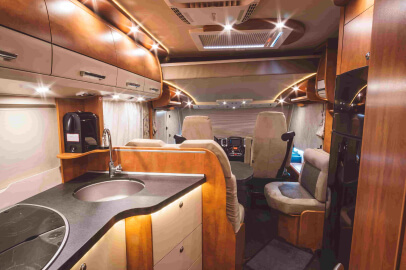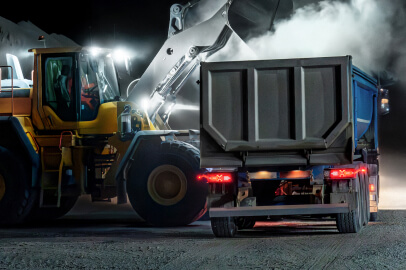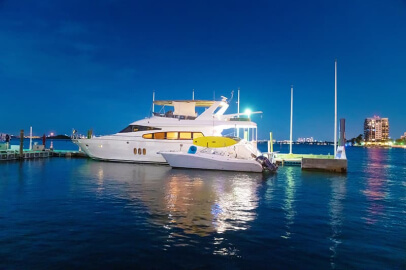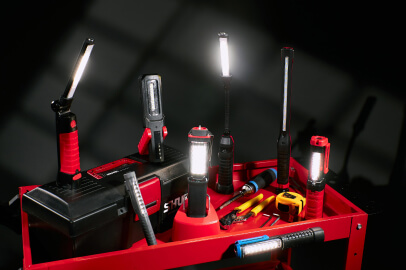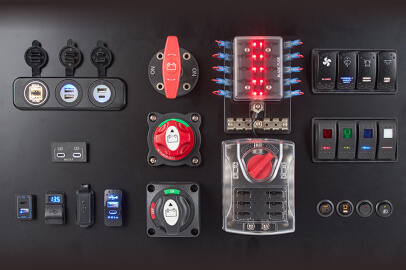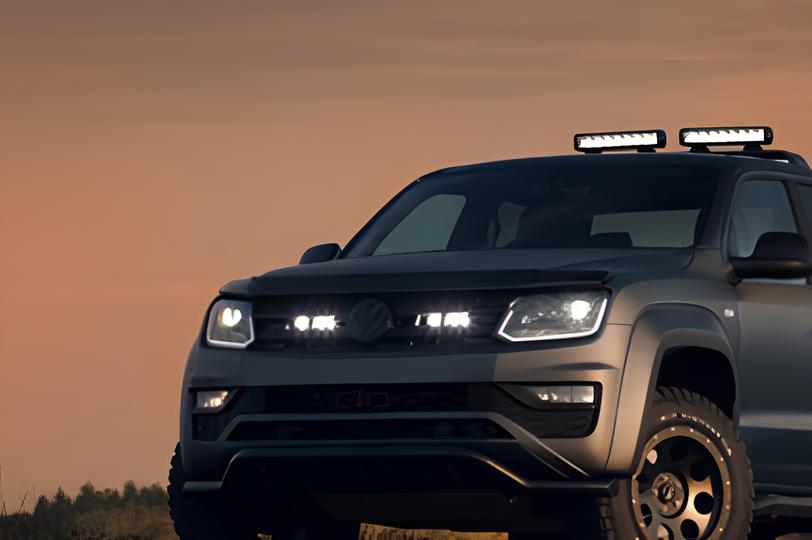Port and Starboard Lights: A Basic Guide to Navigation Lighting
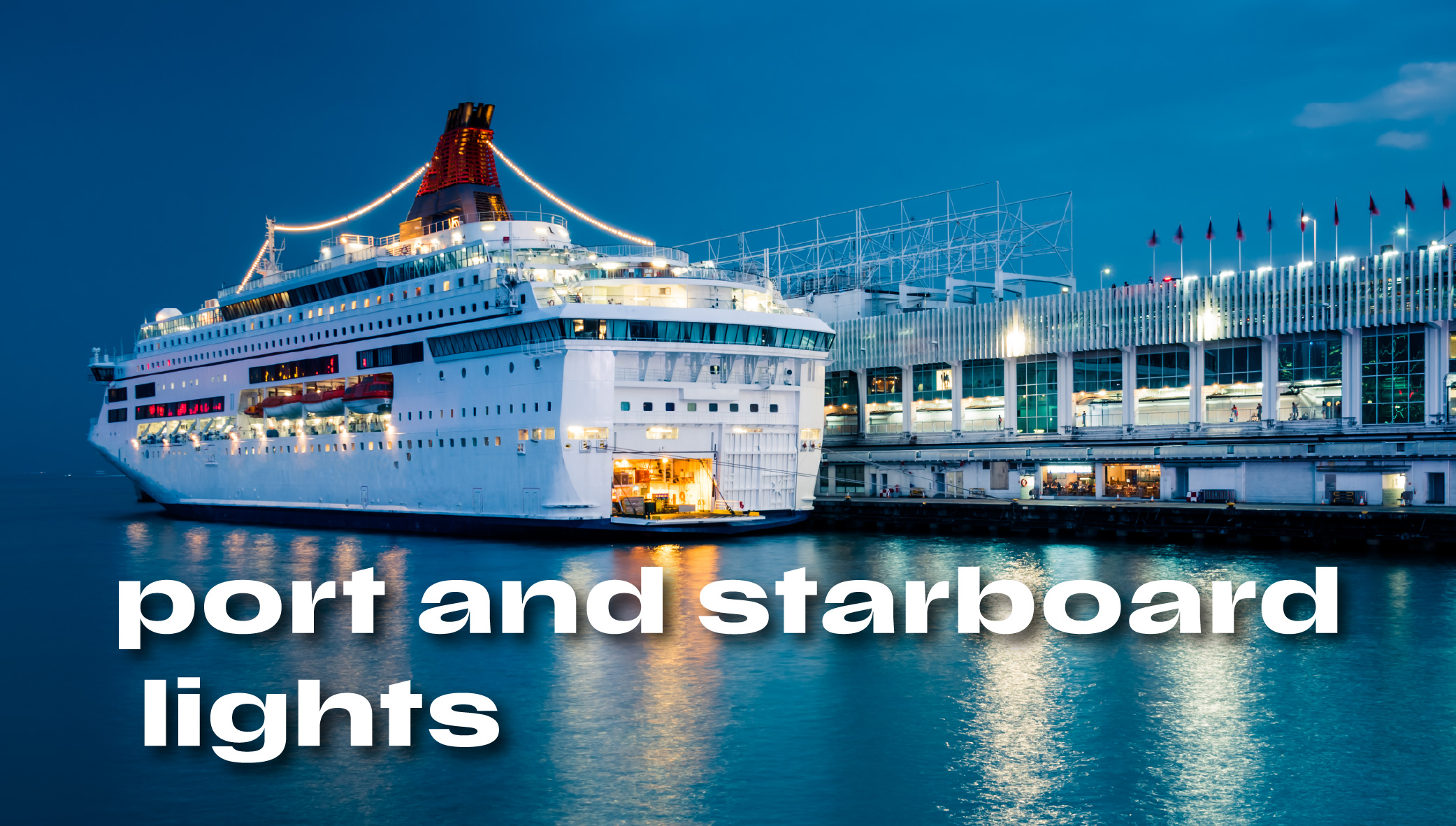

Safe navigation is one of the most important aspects of maritime operations. For centuries, sailors have relied on lights to identify vessels and prevent accidents at sea. Among these, port and starboard lights are crucial tools that help mariners recognize the orientation and movement of nearby ships. Whether you are a yacht owner, a commercial vessel operator, or a fishing boat captain, understanding how port and starboard lights function—and choosing the right equipment—can mean the difference between a smooth voyage and a dangerous encounter.
一、Introduction to Port and Starboard Lights
Port and starboard lights are mandatory navigation lamps that provide critical visual signals to surrounding vessels. They serve two main purposes:
- Indicating vessel orientation: Other mariners can instantly recognize whether they are viewing the left (port) or right (starboard) side of a vessel.
- Preventing collisions: By interpreting the lights, mariners can quickly judge if another vessel is on a crossing course, overtaking, or approaching head-on.
Without these lights, night-time navigation or sailing in foggy and rainy conditions would be extremely risky. That’s why international maritime laws require all vessels—large or small—to use them consistently.
二、What Are Port and Starboard Lights?
By international convention under the COLREGs (International Regulations for Preventing Collisions at Sea):
- Port light (Red): Mounted on the left side of the vessel, shining an arc of 112.5°.
- Starboard light (Green): Mounted on the right side, also covering 112.5°.
- Together, these lights cover 225° of visibility across the front of the vessel, ensuring that approaching ships can identify orientation even at a distance.
For example:
- If you see red (port) only, the vessel is crossing from right to left.
- If you see green (starboard) only, the vessel is crossing from left to right.
- If you see both red and green, the vessel is heading directly toward you.
This universal system ensures that mariners worldwide can interpret vessel movement quickly and correctly, regardless of nationality or language.
三、How Port and Starboard Lights Improve Navigation Safety
The importance of port and starboard lights cannot be overstated. They are vital for:
- Collision avoidance: By recognizing the color of a navigation lamp, mariners know when to give way or maintain course.
- Situational awareness: These lights allow sailors to determine the size, speed, and direction of another vessel.
- Legal compliance: Failing to display correct navigation lights can lead to penalties and liability in case of accidents.
Practical examples:
- Fishing boats: Use them to alert nearby ships of their presence at night.
- Cargo ships: Essential for preventing accidents in busy shipping lanes.
- Recreational yachts: Ensure safe sailing during evening cruises or offshore trips.
In all cases, navigation lights are not optional—they are a universal language of safety at sea.
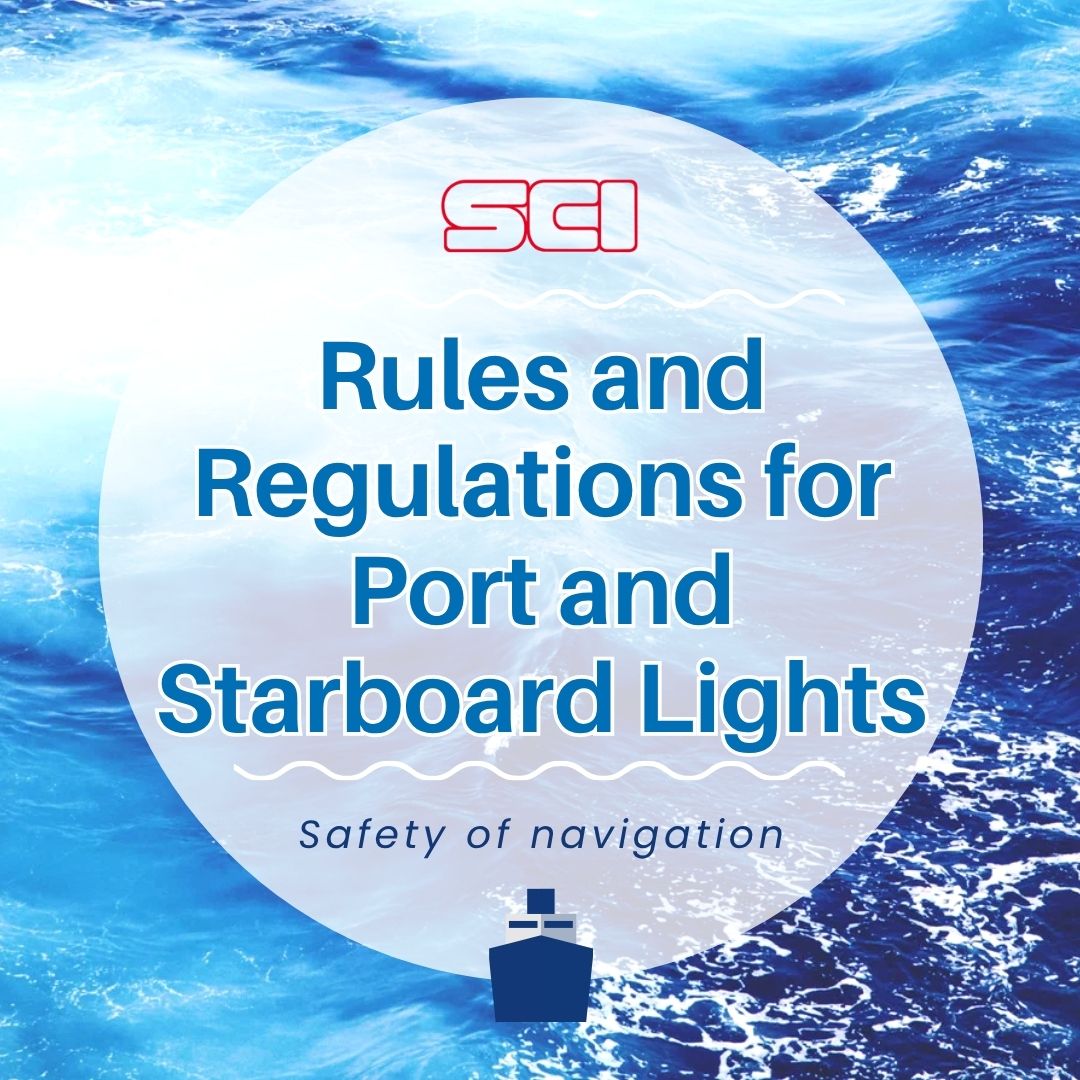
四、Rules and Regulations for Port and Starboard Lights
To standardize maritime safety, the International Maritime Organization (IMO) and United States Coast Guard (USCG) enforce strict rules:
- Visibility range: Typically 2 nautical miles for small vessels, increasing with ship size.
- Angle of visibility: Port and starboard lights must each display 112.5° outward from the bow.
- Positioning: Mounted at the same height, as close as possible to the ship’s bow.
- Operation: Must be illuminated from sunset to sunrise and during periods of restricted visibility.
Non-compliance can result in serious safety hazards, fines, and liability for accidents. Choosing the right certified navigation lamp is therefore essential.
五、Choosing and Maintaining Port and Starboard Lights
Modern vessels increasingly rely on LED port and starboard lights thanks to their long lifespan, energy efficiency, and superior brightness. Compared with traditional halogen or incandescent options, LED navigation lamps offer more stable illumination, reduced power consumption, and greater resistance to harsh marine environments. When choosing navigation lights, there are several key factors that vessel owners should carefully evaluate:
Key Considerations When Selecting Navigation Lights
- Durability – Opt for marine-grade materials that are waterproof, corrosion-resistant, and designed to withstand continuous exposure to saltwater and UV radiation.
- Compliance & Certification – To ensure legality, safety, and global reliability, all navigation lights must comply with USCG ABYC-C5 standards. This certification confirms that the products meet the rigorous requirements set by the United States Coast Guard (USCG) and the International Maritime Organization (IMO). By adhering to these international standards, vessels can operate their navigation lights legally and confidently in waters around the world.
- Visibility Range & Brightness – Navigation lamps are classified by nautical miles. For most small to medium vessels, a 2NM visibility range is required, while larger ships may require higher-rated lights.
- Installation & Power Source – Installation and Power Supply: Select a product that meets the voltage specifications based on the vessel’s power distribution. Some vessels are equipped with 12V power, while others are equipped with 24V power. Choosing an incompatible voltage may cause product damage or burnout. SCI’s cruise lights are compatible with 12/24V multi-voltage systems to avoid the risk of product damage due to voltage compatibility issues. The correct installation angle must be ensured to comply with regulations.
- Maintenance Practicality – Choose lamps with easy-to-replace lenses or LED modules to reduce downtime and ensure reliability during long voyages.
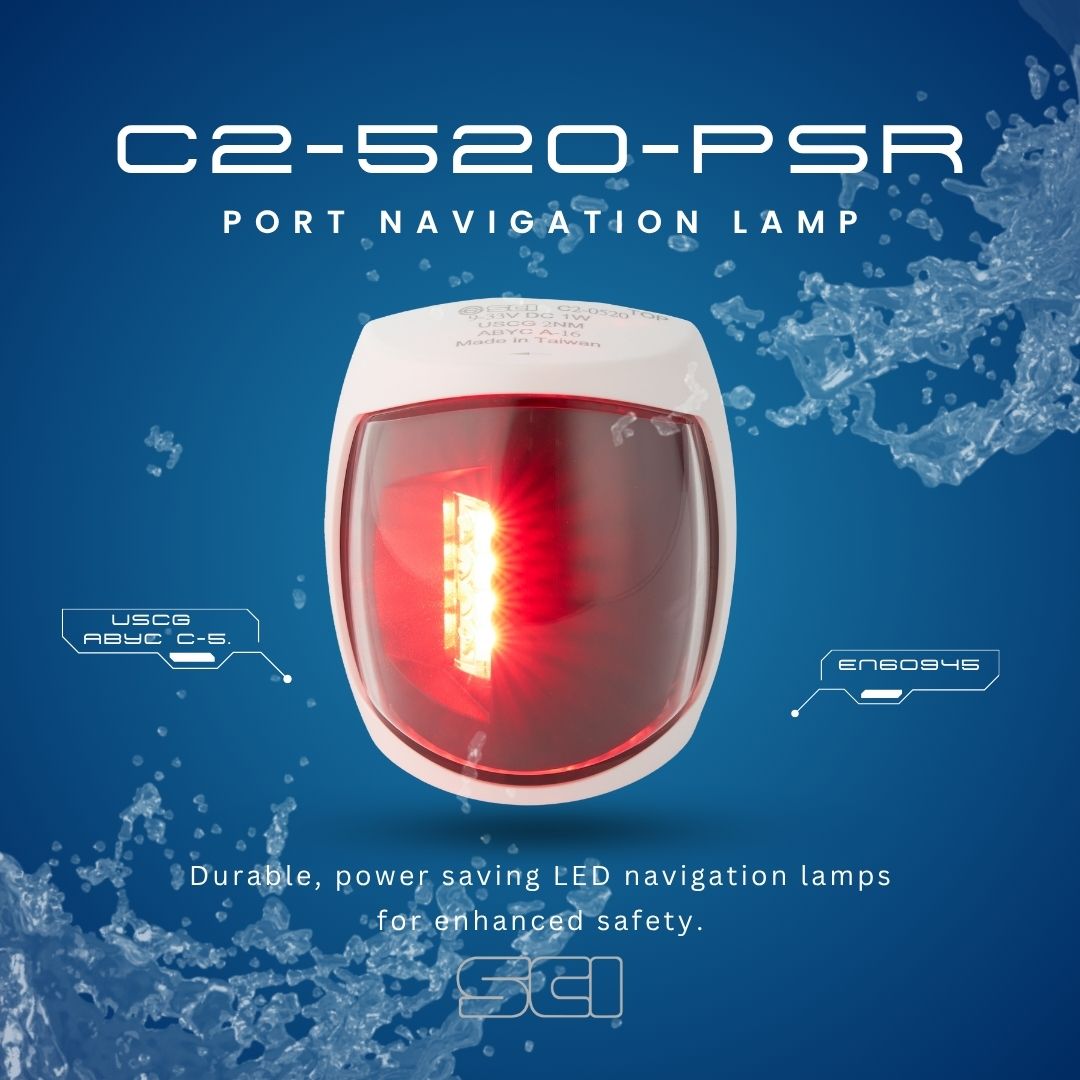
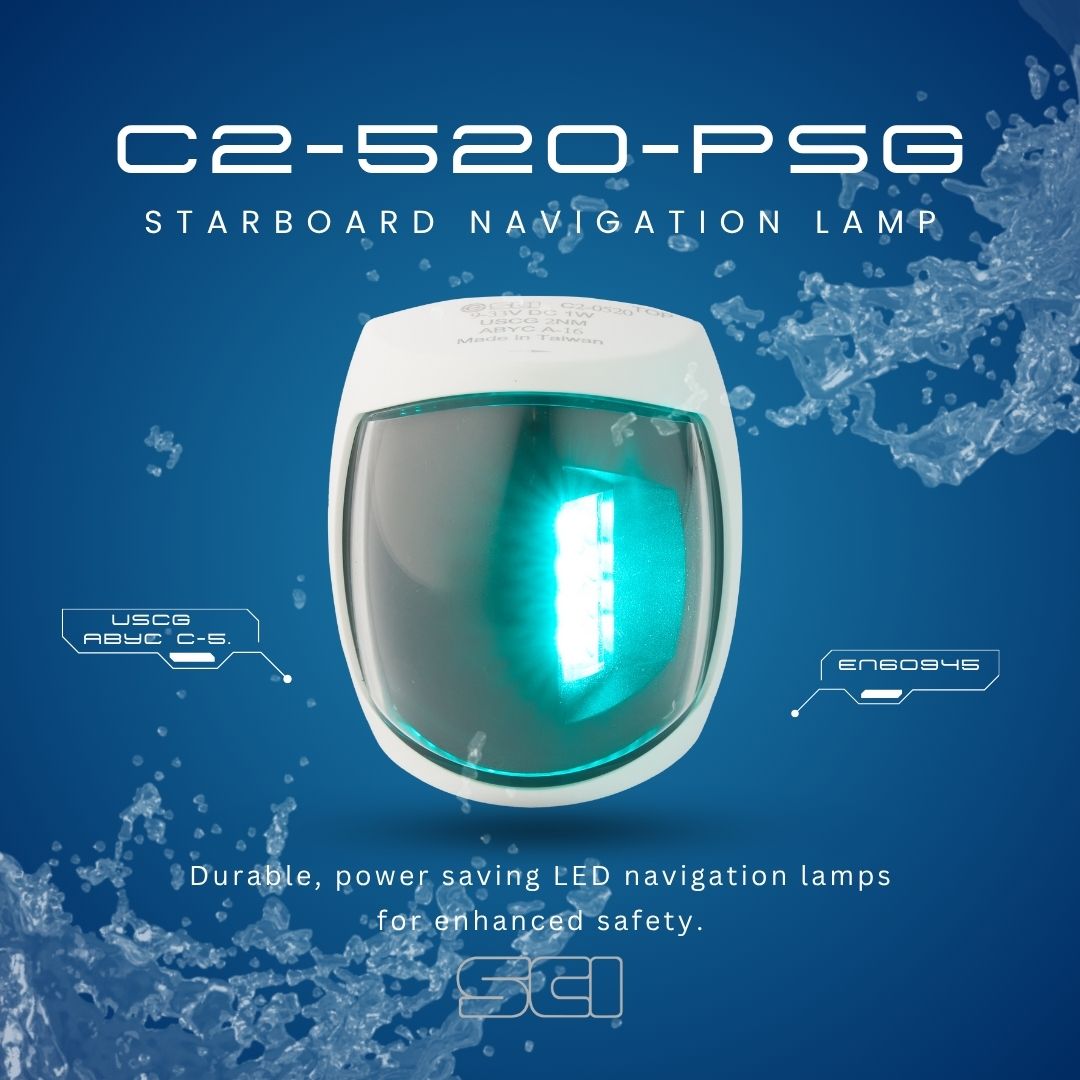
Recommended SCI Products for Marine Safety
SCI offers a wide range of certified port and starboard navigation lamps designed for durability and international compliance:
- C2-520-PSR 2NM Navigation Lamp (Red) –with a green starboard light, meets USCG ABYC-C5 certification standards, has a 2 nautical mile visibility range, is suitable for small to medium-sized vessels, and is designed for harsh marine environments with long-term durability.
- C2-520-PSG 2NM Starboard Navigation Lamp (Green) –Equipped with a red port light, it complies with USCG ABYC-C5 certification standards and has a 2-nautical-mile visibility range. It is suitable for small to medium-sized vessels and is designed for harsh marine environments with long-term durability.
- C2-517R 2NM Navigation Lamp (Red) –Complies with USCG ABYC-C5 certification standards, designed for harsh marine environments, long-lasting and durable, used with a green starboard light.
- C2-128GLG G1 2NM Starboard Navigation Lamp (Green) –Complies with USCG ABYC-C5 certification standards, designed for harsh marine environments, long-lasting and durable, used with red light sidelights.
These lamps are built with rugged housings, waterproof seals, and advanced LED technology, making them an excellent investment for both safety and compliance.
Best Practices for Maintenance
Even the most advanced navigation lights require proper care to ensure reliability. Follow these maintenance tips:
- Clean the lenses regularly to remove saltwater stains and maintain maximum brightness.
- Inspect electrical wiring for corrosion, loose connections, or wear caused by constant vibration.
- Check waterproof gaskets and replace if damaged to prevent water intrusion.
- Test the lights before every voyage to confirm compliance and functionality.
- Replace aging LEDs or bulbs in accordance with manufacturer guidelines to maintain brightness and range.
By investing in durable, certified port and starboard lights—such as SCI’s IMO- and USCG-compliant models—vessel owners not only enhance visibility but also guarantee safe and lawful navigation in all sea conditions. Proper selection and maintenance ensure your lights remain a dependable safeguard against collisions and an essential tool for maritime safety.
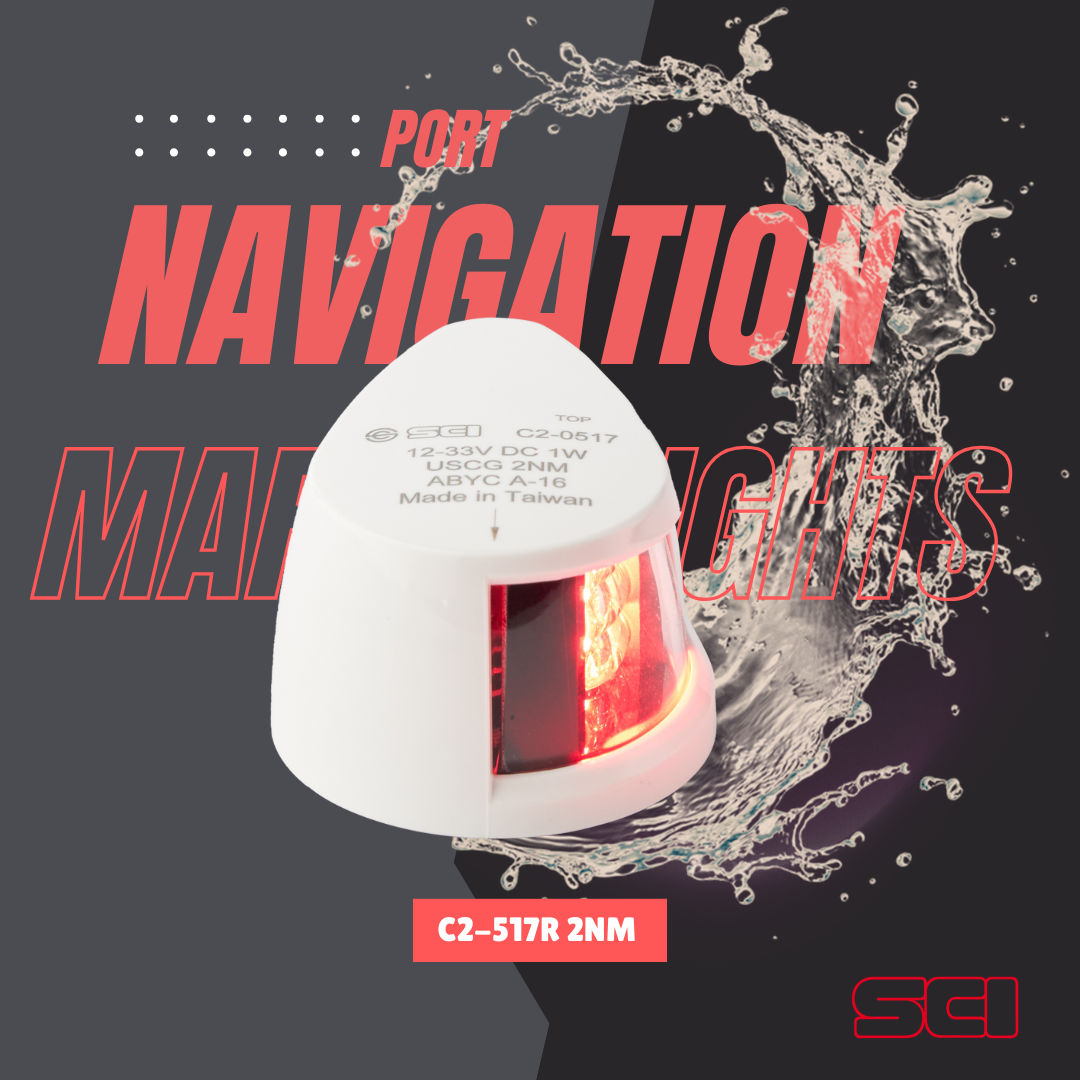
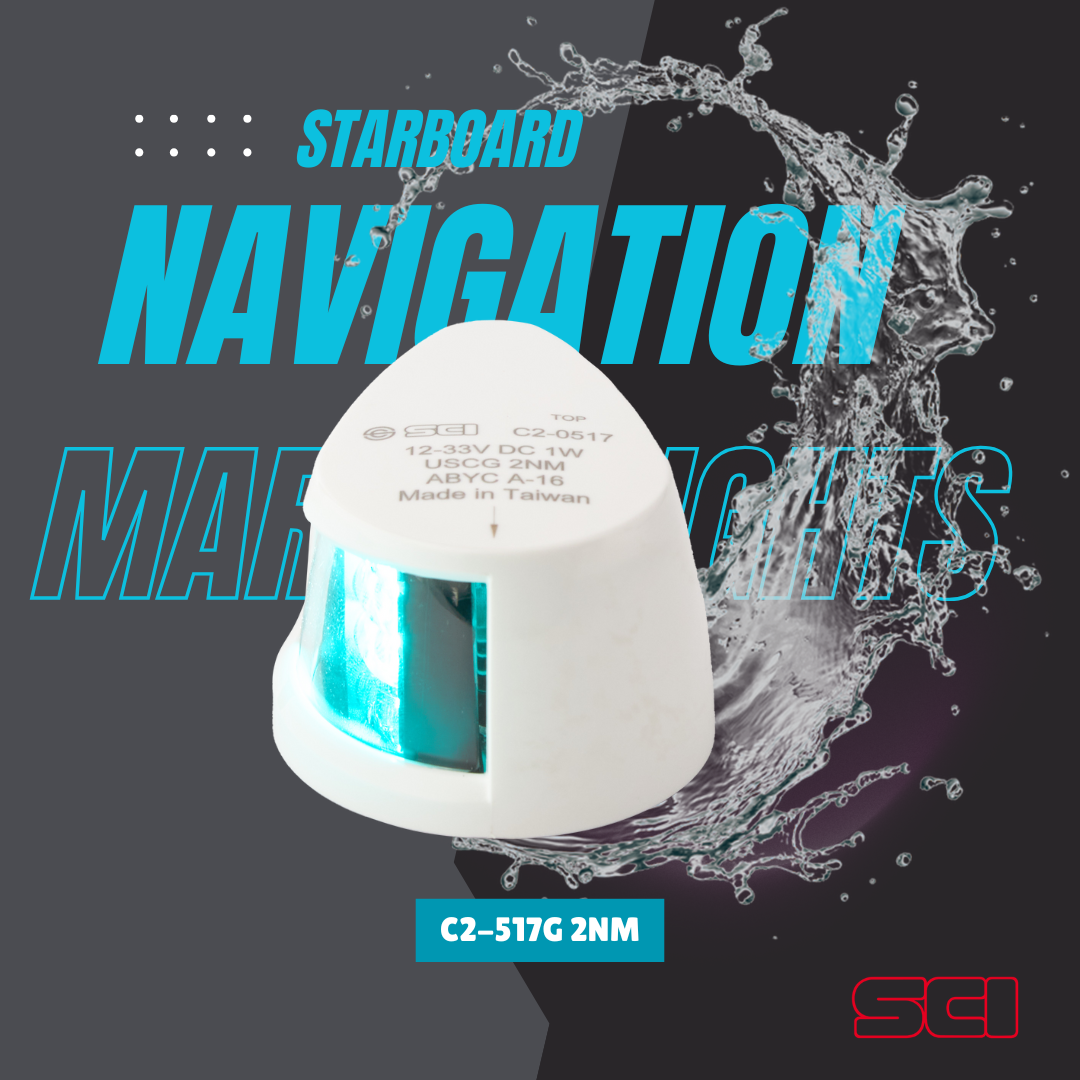
六、FAQ about Port and Starboard Lights: Functions & Product Insights
Q1: Why are port and starboard lights different colors?
Because red and green are universally recognizable, they provide instant orientation cues to mariners.
Q2: When should navigation lights be turned on?
From sunset to sunrise, and during fog, storms, or any period of restricted visibility.
Q3: Are small boats required to use port and starboard lights?
Yes, even recreational boats must display navigation lights at night. Some smaller vessels use combined bow lights.
Q4: How do I ensure my lights are compliant?
Purchase certified models such as the SCI Navigation Lamps , which meet international safety standards.
👉 Ready to upgrade your Marine lighting?
Contact our team today for expert guidance and tailored lighting solutions for your next project.
Further Reading: IP67 vs IP68: Waterproof Rating Comparison and Selection

